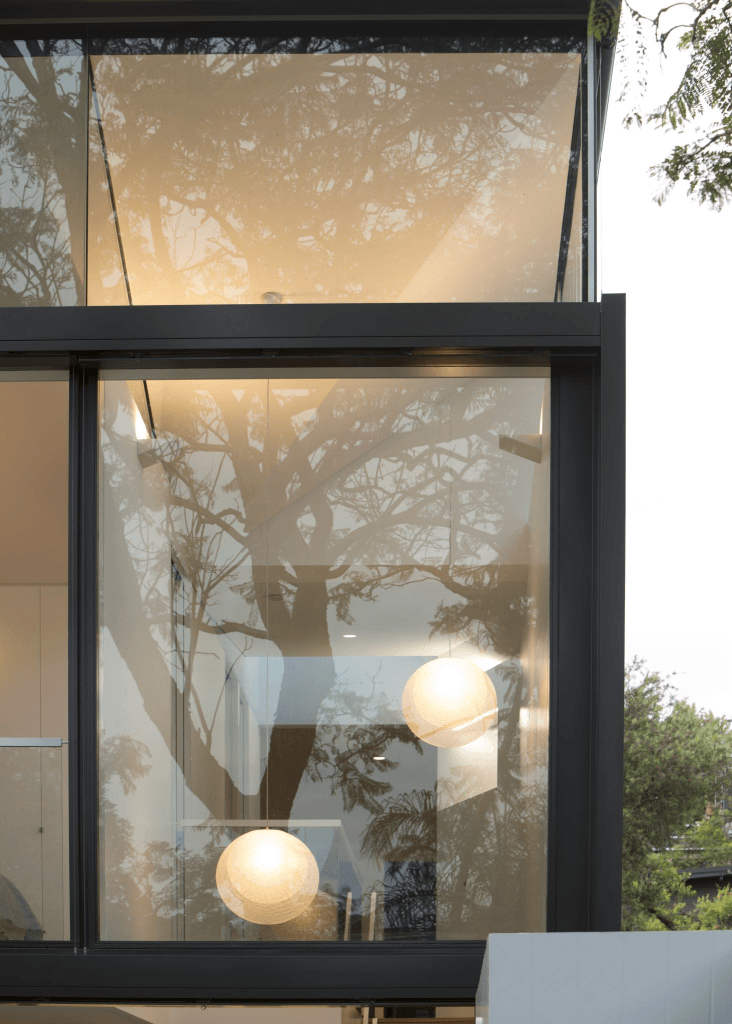Remind me why I need double glazing again?
Architects and building designers are increasingly specifying energy efficient products to meet government policies like the 7 Star housing initiative.
Put simply double glazing does offer better insulation against unwanted heat loss or heat gain. Double glazing can at least halve heat transfer between the warm side and the cool side, markedly reducing a building’s energy use and increasing comfort, particularly if the rest of the building envelope is already well insulated.
Double glazing assist’s with increasing the energy efficiency of your home, contributes to an increased star rating, improves the liveability, lowers your energy bill thereby reducing the environmental impact.
What is double glazing?
Two panes of glass sealed in a unit called an IGU, Insulated Glass Unit, separated by a spacer bar.
How does it work?
The space between the panes (usually around 12mm) creates an air gap that slows down the thermal transfer hot or cold.
“The physics of insulating glass is relatively straightforward. The first, i.e. outermost, glass sheet provides a solid barrier between outdoors and indoors. It can be clear – if solar transmission and daylight need to be maximised glass can be treated with a tint or low-emissivity coating to reduce solar heat and light. The next, second ‘layer’ is a gap of typically 12mm or more, filled with dry air or better still, an inert gas like argon which conducts less heat than air. The third layer is glass which stops the air or argon from escaping and very importantly, acts as an insulating buffer between the outer glass and the building interior”
There are significant benefits to specifying IGUs and higher performing glazing and window systems in warmer climates, Dr Peter Lyons – Building Physicist
Common myths & facts you need to know!
Double glazing is great to reduce noise
Not as much as you think. In the average home the spacer or gap between the panels of glass is generally 6-12mm. The optimal gap for acoustic control for traffic or aircraft noise is 150mm.
Double glazing only works for cold climates
No so. In Australia, regions with warm to hot climates have traditionally seen less demand for insulation. However, there are compelling reasons to consider installing Insulating Glass Units and high-performance glazing and window systems even in hot areas. The main one being the improved cooling efficiency which occurs by maintaining a more consistent internal temperature resulting in reduced energy consumption and enhanced comfort.
Laminated glass is double glazed
No, this product is single glazed with a PVC interlayer adhering two panels of glass together.
Is there a separate Australian Standard that covers double glazing?
Yes, it’sAustralian Standard AS 4666 Insulating Glass Units. It is referenced in AS 1288 Glass in Buildings and therefore a secondary reference of the National Construction Code (NCC). This means compliance with AS 4666 is a mandatory requirement for all manufacturers supplying windows incorporating IGU’s.
Can I upgrade the glass in my existing window frames with double glazing?
Generally, no. Double glazing is thicker and will normally require an entire new window frame to accommodate the thickness of the IGU.
How do I get the best performance
Using Argon gas instead of air in between the panels will increase thermal and acoustic performance.
A wide range of different glass types can be selected to suit, such as low-e and laminated, to further increase energy efficiency and noise control. Low-e glass will further reduce the amount of heat escaping while thicker laminated panes disrupt sounds waves to improve acoustic performance.
Why have Australian homes only had single glazing?
When IGU’s were invented in the 1940’s the technology was designed for cold climates, today’s IGUs have a much higher performance and are now suitable for any climate – hot or cold – and for all building types. Therefore, double glazing now has proven benefits for our buildings to match the Australian climate hence why the government is legislating their use to reduce the burden on energy.


Key Points & Benefits:
- Great windows are good for your health.
- 7 Star housing legislation will increase the need for double glazing.
- Windows underpin the affordability of running a household.
- High performing windows which include double glazing will become a major selling point for homes in the future with rental and sale incomes likely linked to the homes Star Rating.
- Double glazing reduces your energy costs by working with other building insulation to provide a more constant inside temperature.
- In some instances, artificial heating or cooling will be decreased or not needed.
- Double glazing also reduces condensation which can result in the unhealthy formation of mould.
- When you are close to a window, your comfort is also affected by the temperature of the glass. With double glazing it’s harder for the unwanted outside temperature to transfer through, leaving the inside pane close to room temperature.
- You stop significantly more night-time re-radiated heat from entering inside your building. After a long hot day, materials have absorbed that direct solar heat (concrete, stone, bricks are hot to touch) and when the sun goes down, that heat re-radiates outward, wanting to go from ‘where it’s hot to where it’s not’ (which is now inside your building). Good insulation means less re-radiating heat enters internally through your glazing.
- Reduces medium to high frequency sounds especially if the panes of glass are different thicknesses.
- Improved security having double the panels of glass.
Where do we go from here?
Double glazing has an important role to play as our climate changes and we Aussies strive to increase the comfort of our home and workspaces and decrease our energy bills.
More importantly the liveability factor which has a proven link to overall health benefits when our environment has the perfect mix of temperature, natural light and ventilation.
Want more information?
Email us: info@greaterglass.com.au

